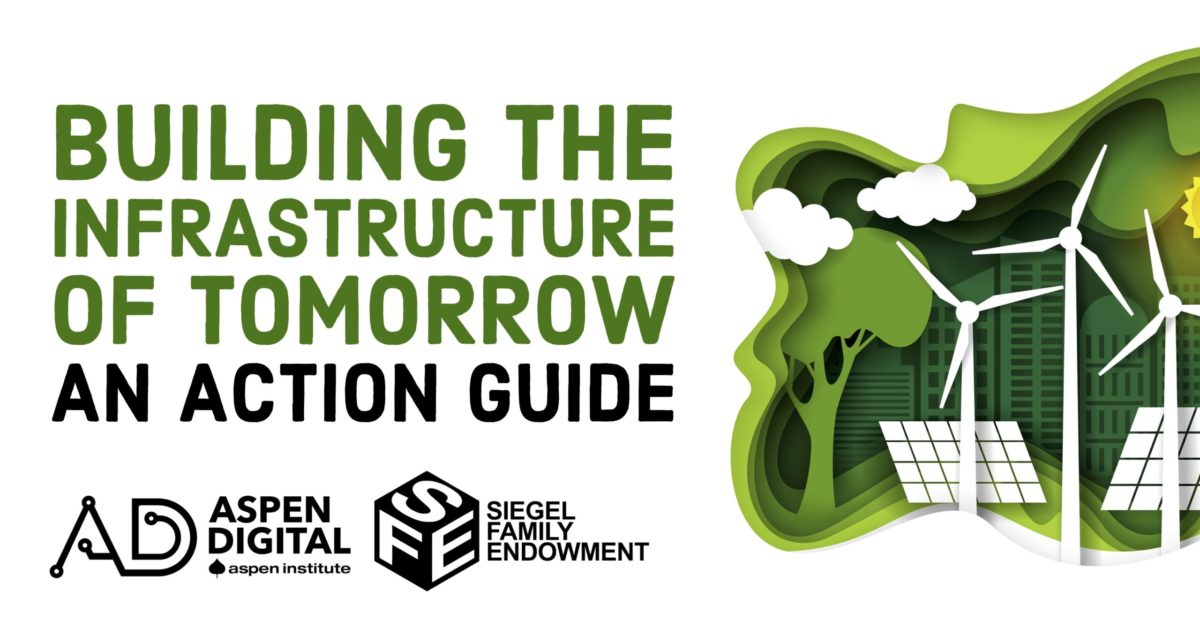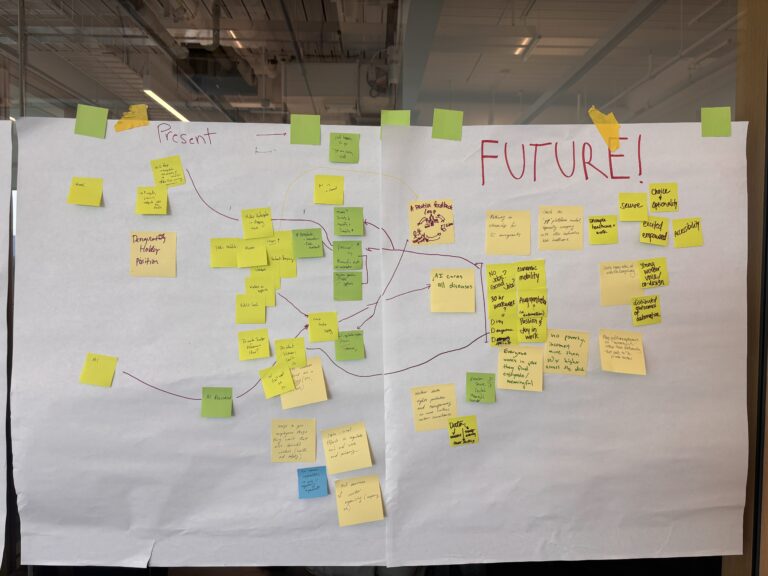
We have entered a new era of infrastructure investment. With last year’s bipartisan commitment of over $1 trillion in federal funds to modernize America’s bridges, airports, internet grids, and more, the U.S. has a once-in-a-generation opportunity to reimagine and rebuild the networks that connect and sustain us. Now, as stakeholders around the country turn to the nitty gritty of allocating funds and designing plans for their communities, there are tangible actions they can take to create systems that are equitable, dynamic, and built to last.
With support from Siegel Family Endowment, Aspen Digital has developed a new action guide offering concrete ideas for how to meet this window of opportunity, which builds on existing knowledge of the multidimensional nature of infrastructure.
As the new year begins, we hope policymakers and practitioners will seize this moment to make creative and collaborative choices that meet our collective infrastructure needs for years to come.
Changing Mindsets
Congress may have approved a historic investment in jobs and infrastructure, but many cities and states still approach spending in siloed and constrained frameworks. To develop 21st century infrastructure, local governments should draw on lessons from the COVID-19 pandemic, which saw rapid innovation across public agencies as they changed the flow of streets and transit to create safe public spaces for residents and businesses. These last two years have revealed how nimble our society can be when designing places and how responsive we can be to the specific needs of communities.
That’s why community engagement must be an ongoing process, before and after new projects are created. As towns, cities, and states deliver on Washington’s infrastructure ambitions, collaboration across agencies will also be essential to spending taxpayer dollars well and addressing the diverse needs in people’s daily lives. “We can make it people’s jobs to be thinking about how to pull people together to accomplish a common goal,” said Jason Lally, deputy chief data officer for the state of California.
Developing Metrics
A new approach to infrastructure requires rethinking the criteria by which to plan, fund, and deliver investments. Where traditional models for building a new train line might focus on cost minimization or service levels, there is also a strong case for integrating equity and climate impacts into metrics, as well. “A big part of why this infrastructure conversation is so crucial right now is that infrastructure investments last a long time,” says Harriet Tregoning, director of the New Urban Mobility Alliance (NUMO) at the World Resources Institute. “We don’t want to lock ourselves into a way of doing business or managing communities that’s high-carbon, inequitable, and inefficient.”
In establishing metrics for equity and climate impact, community-driven data—where citizens are directly involved throughout the collection and interpretation processes—will help ensure a project’s benefit to the community it serves.
Harnessing Capital
The infrastructure of tomorrow also needs sustainable financing models. Too often, the cities and towns that actually implement projects must compete for federal grants or philanthropic dollars, which reasserts siloed thinking and leads to deferred spending on long-term maintenance. The path forward should legalize new methods for infrastructure financing so that communities have the freedom to experiment and collaborate as they design and build. Any major federal investment in infrastructure should allow public bodies to pilot innovative delivery and revenue-generating mechanisms.
In addition, because the U.S. has a habit of building new projects before figuring out how to pay for them—to the detriment of underserved communities—the longevity of a project must be built into its financing and funding. Bundling maintenance into project costs will allow localities to garner public and private investment with a concrete price tag.
Engaging Community
Public works are, indeed, public. But too often, the neighborhoods most affected by projects are left out of deliberations, creating the landscapes of inequity we see today. To harness the potential of historic infrastructure investments, local planners must also engage the public on the shared benefits of future development. By deploying ‘credible messengers,’ trusted community members such as faith or business leaders, local administrators can help planners find the right language for approaching controversial topics or concerned communities. Public officials must tap into how a town or neighborhood interacts with infrastructure, and adopt localized terms that translate infrastructural benefits to a compelling narrative and format.
Local policymakers and practitioners should also look to expand the accessibility of engagement wherever possible so that advisory bodies and other forums are truly representative of their communities.
Moving Forward
Americans are living 21st century lives using 20th century infrastructure. Now is the time to get prepared for the next crisis as well as for the economic and technological changes ahead. And as this latest report lays out, stakeholders have the insights and resources to address these challenges: we must work across sectors and silos, integrate equity and climate into every decision, embrace community input and data, pursue innovative financing mechanisms, and ground infrastructure in the dynamic needs of our citizens. Congress has green-lit the path ahead. Now it’s time to get creative and work together in this historic moment.
This is a first in a series of reports that explores how to make multidimensional infrastructure a reality. Stay tuned for future reports over the next few months.





